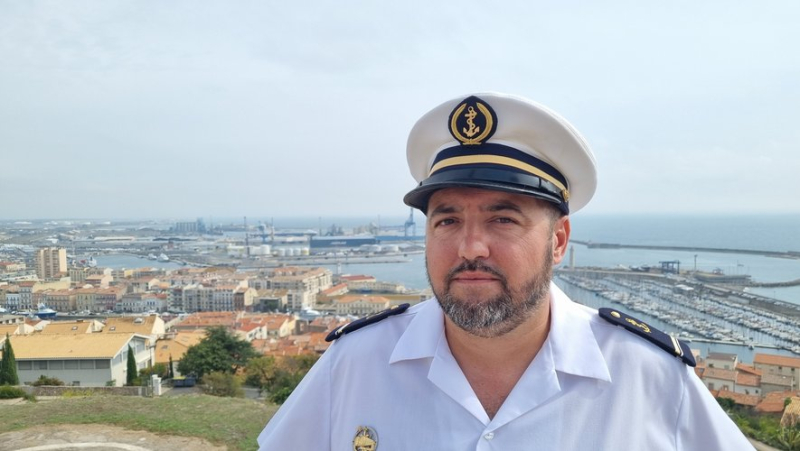A new leader for the lookouts of the Sète semaphore fleet

Le premier-maître Jérémy D. vient de prendre ses fonctions de chef de poste au sémaphore de Sète. Hélène Amiraux
Le sémaphore, poste avancé de la marine nationale pour la surveillance et la coordination du sauvetage en mer, à Sète, fait partie des 19 stations stratégiques de Méditerranée.
The lookouts of the Sète fleet have a new boss. On September 25, Chief Petty Officer Jérémy. D officially took command of the Sète semaphore for four years. After two years as deputy in Sète to Chief Petty Officer Jean-Gilles P., this native of Béziers, installed this Wednesday by Lieutenant Alizée G., has become head of post assigned to this maritime lookout of the French Navy, nestled in Fort Richelieu (built in 1743). At 43, Chief Petty Officer Jérémy D. is taking on this position for the first time “which is equivalent to that of a unit commander”. “It's a career accomplishment”, the person concerned told us, having already known five semaphores, including that of Espiguette. The sailor-lookout also carried out functions in CROSS (regional operational surveillance and rescue centers) at Cap Gris Nez near Calais and at Jobourg in Normandy. Experienced in coordinating sea rescues, engaged as a lookout since the beginning of his career, Chief Petty Officer Jérémy D. describes a lookout specialty that requires "being curious, versatile due to the wide spectrum that one can encounter", and always in contact with local surveillance and rescue authorities, also on land.
"Ssurveillance of a port that is essential in the Mediterranean"
In Sète, the lookouts (about ten) have two main missions, summarizes Lieutenant Alizée G., second in command of the Operational Training for Surveillance and Information of the Territory (FOSIT) Mediterranean, the body that oversees the 19 other semaphores in the Mediterranean. This involves the maritime defense of the territory along the 2,000 km of coastline from Italy to Spain. “We are the last bastion against threats that may come from the sea.” The semaphore is also the place of action of the State at sea (AEM) under the authority of the maritime prefect: “That is to say the surveillance of navigation, the safeguarding of human life at sea and the preservation of the environment", specifies the naval officer. “In the Mediterranean, this represents, for example, 300,000 civilian ships and 500 foreign military vessels per year to observe”, continues Lieutenant Alizée G.
Chief Petty Officer Jérémy D. will take his share. "Here the specificity in Sète is the surveillance of a port which is essential in the Mediterranean and we also have that of the Etang de Thau, a salty expanse, under the authority of the maritime prefect."
I subscribe to read the rest




